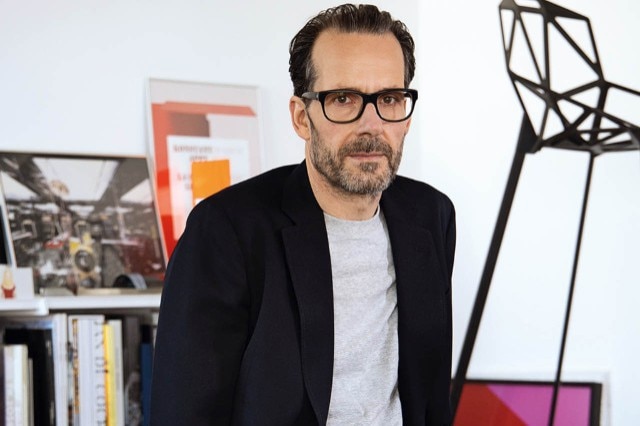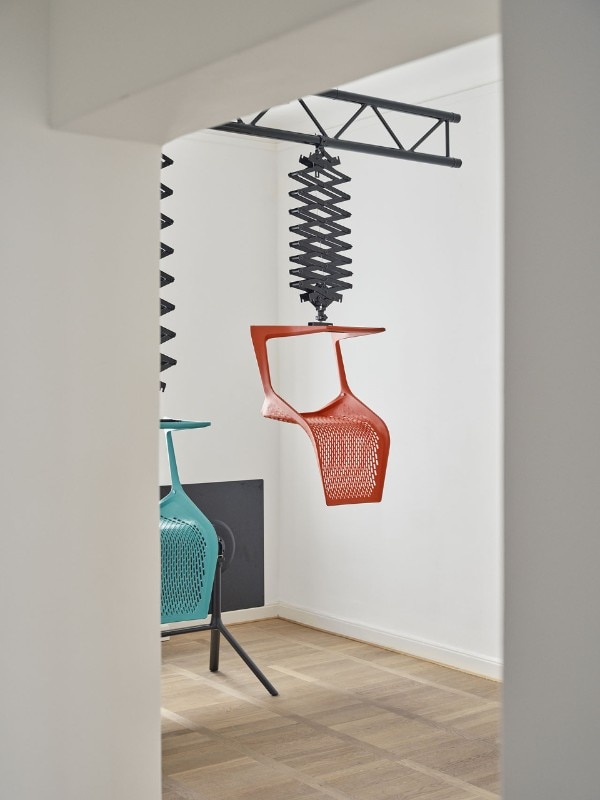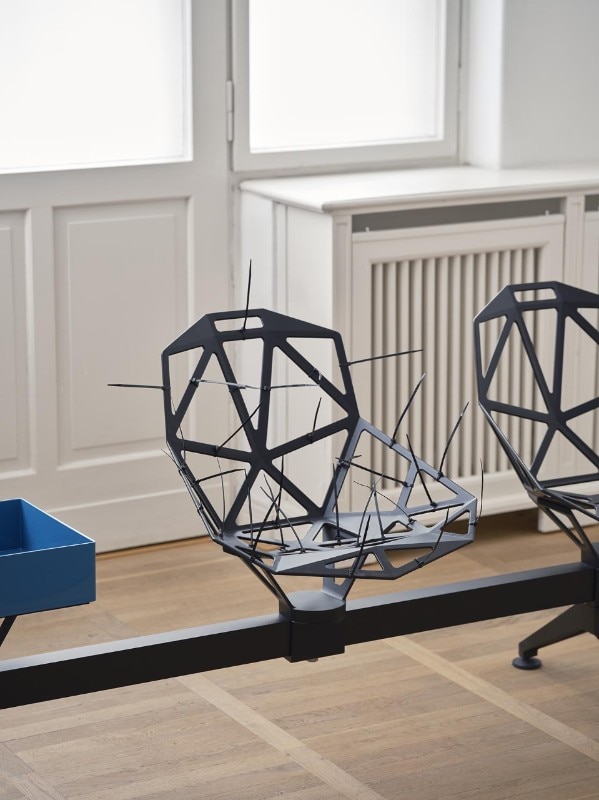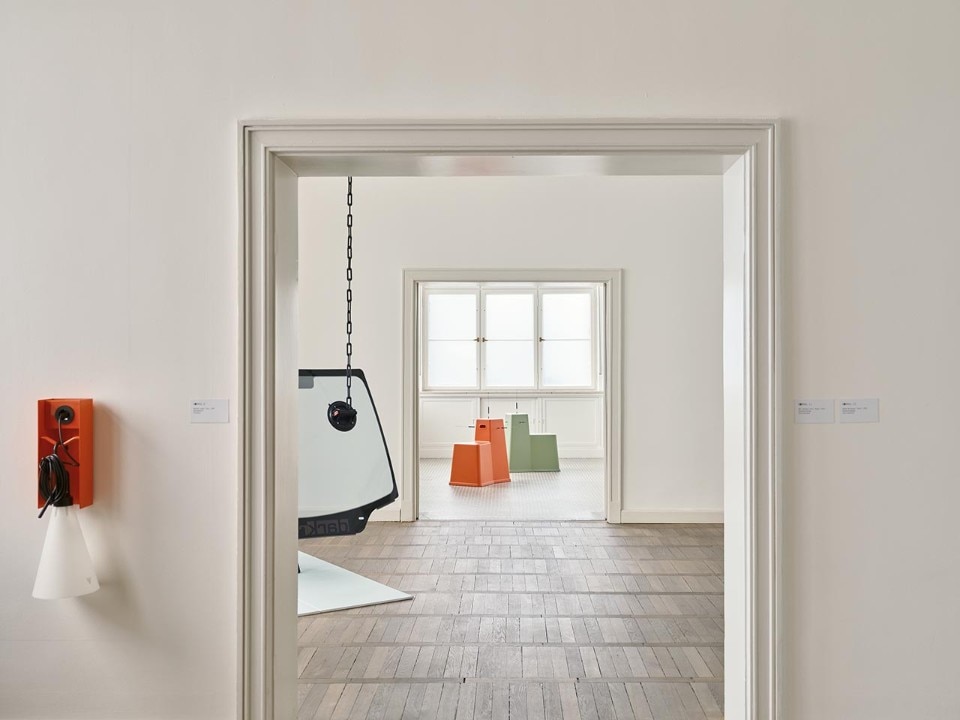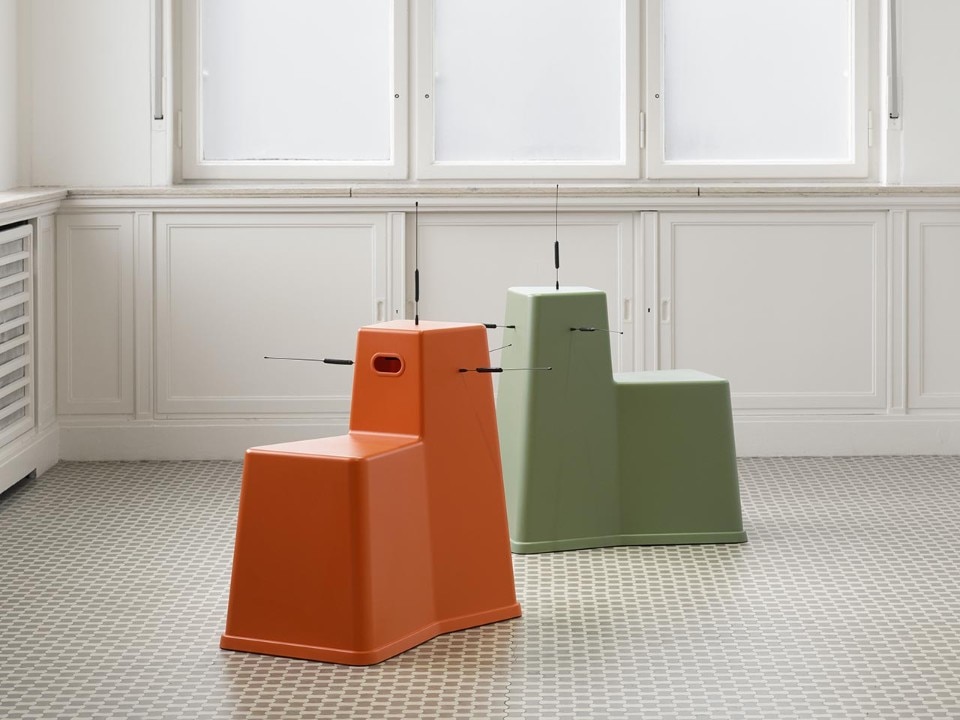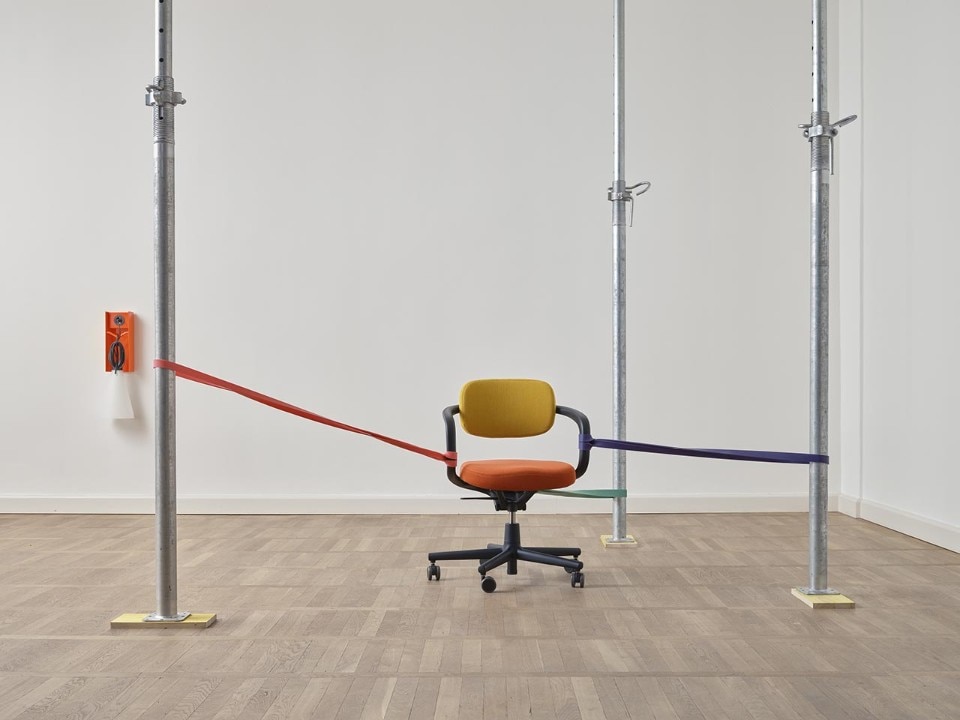It is a speculative exercise, as well as formal, that escapes from the classical format of monograph or the site-specific installation. With “New Normals”, Konstantin Grcic’s last exhibition in the Haus am Waldsee International Art, on the outskirts of Berlin, the German designer explores the relationship and images related to his own products returning them through “an open work”, as he revealed to Domus. His pieces of furniture – exceptional classics of the design culture over the latest twenty years – are in this case deconstructed, modified or incorporated to other objects in order to provoke an effect of disorientation, and to question spectators about our daily life’s volatile identity, in the present as well as in the near future.
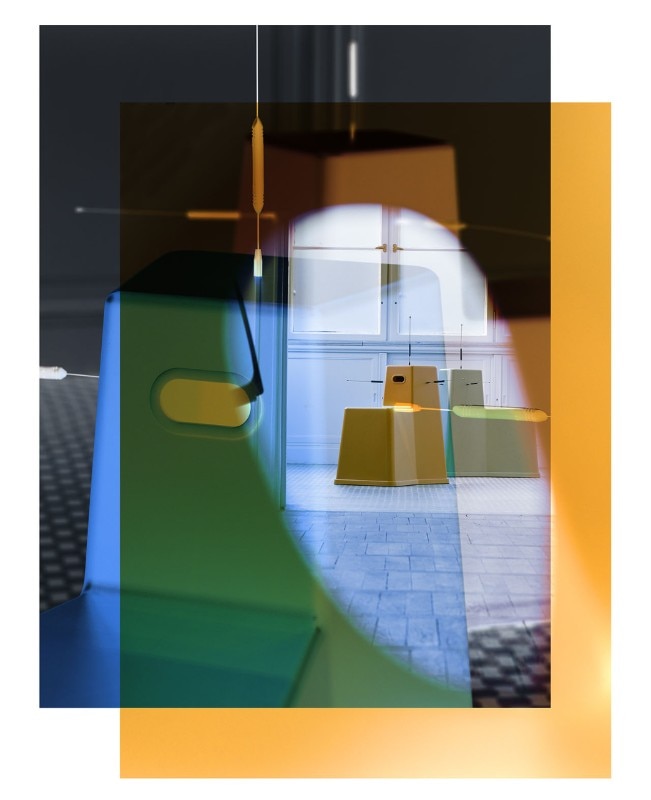
“The New Normal is a very interesting topic because it is fairly contradictory: what is new implies unexpectedness, while normality is founded on habits”, Grcic points out. “The title was conceived during the pandemic, but it does not necessarily reflect the expectation of a global changing that we have talked about over the last two years. I wanted the spectator to confront with something that does not make sense and is not recognisable immediately. Something you can see, but without understanding why that is there”. Using rooms as a sequence of project rooms, Grcic displays some of his icons, hacking them in new compositions along with other objects. As they were picked up from a bricoleur’s toolbox – these ones are a deliberate tribute to a design category that is so special for the design theory, namely the anonymous objects one, in this case, even more elevated thanks to a rediscovered sculptural language.
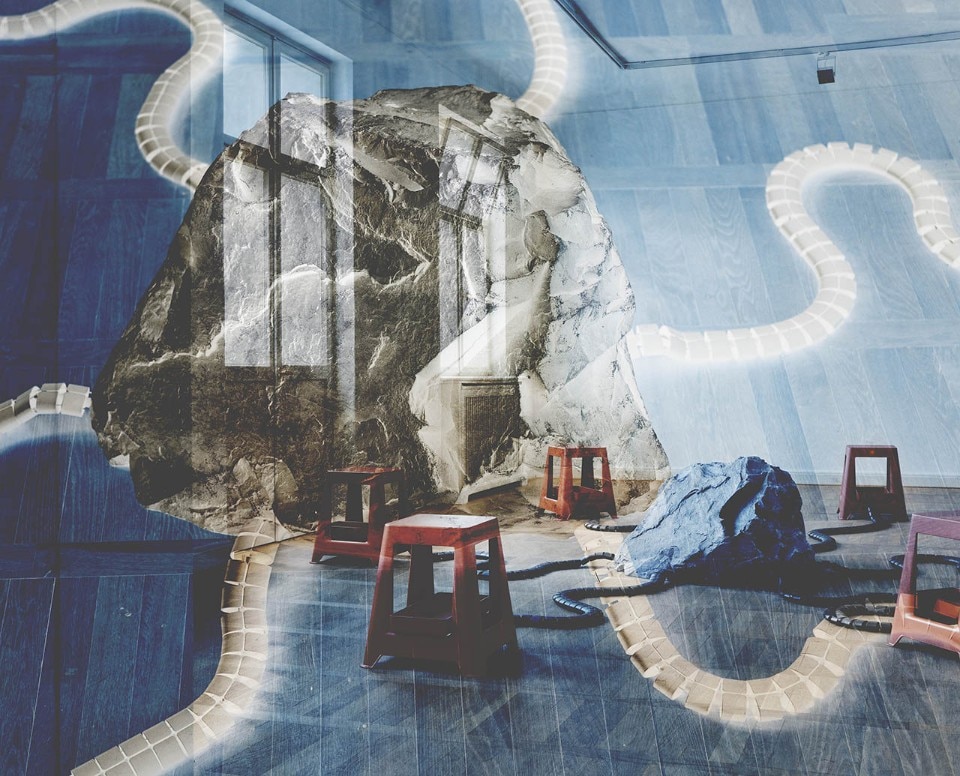
In Gricic’s compositions, objects act as carriers to unleash in visitors’ minds other images, maybe another idea of future: it is not conceived as a threat, but as an innate transformation being part of things. Among Grcic’s most recent works (2020, Magis), the Bell Chair is chained to a pole, as it was a bicycle. The Traffic Chaise Longue (2013, Magis) is shored up with selfie sticks that seem to scrutinize it from any perspective. Myto (2008, Plank) is upside-down and hung on a beam, Stool-Tool (2016, Vitra) is studded with radio antennas, Chair One becomes softer adding hairy seat cushions. May Day (1999, Flos) appears in any room; assembled and always the same – it seems to turn into a kind of a fire extinguisher. Each group of objects is suitable for being read again as they were scripts, starting an endless abstract and dreamlike semiosis. We wonder what will happen and if we might consider normal the use of objects in this configuration one day.
I wanted the spectator to confront with something that does not make sense and is not recognisable immediately. Something you can see, but without understanding why that is there
Moreover, the hacking process offered Konstantin Grcic the opportunity for introspection that – far from providing certain and reassuring compositions – helps him questioning about his own work and qualities of design. “Since I was a child, I started modifying objects: my first creation level was taking things and putting them together. If in my profession I have to “freeze” my works in a final state, on the contrary, in my studio as well as at home I live with many prototypes that are rather different from my official objects. As a designer I like conceiving a project as it was an open destination in order to encourage an interaction other than the simple possession. I do believe in users’ clever as well as I think that a good project can provide a possibility for adaptation in the industrial field, too. All of this is achievable without sacrificing accuracy. May Day is a precise object that at the same time is not so accurate: since its launch in 1999 users have bought it in various ways, maybe thanks to its hook” he says.
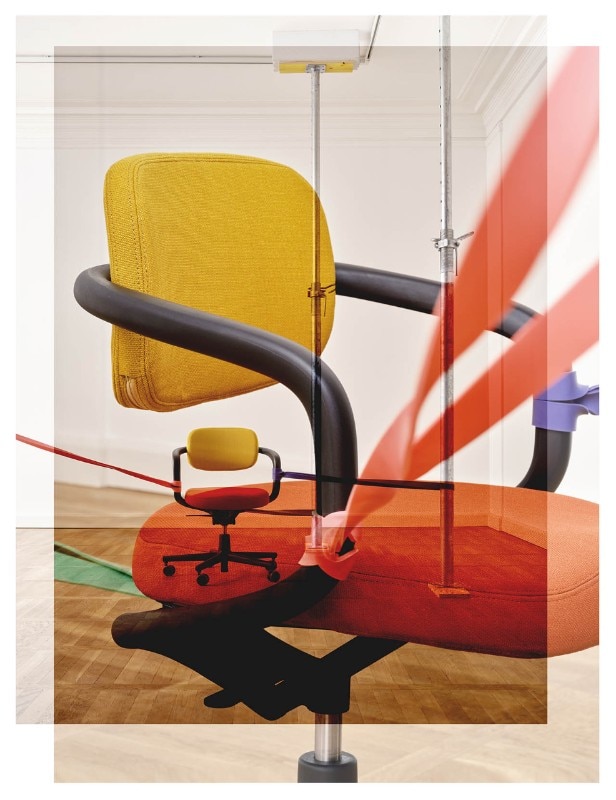
The exhibition is combined with a catalogue (ed. Verlag der Buchhandlung Walther König, since 22nd March) that includes a Grcic’s interview by curators Ludwig Engel e Anna Himmelsbach, together with the photographs of Florian Boehm’s exhibition. Providing an additional interpretative level, images seem to amplify the enigmatic presence of objects through an overlap of layers and perspectives. “When we build physical objects, we face up to limits, associated with the laws of physics, properties of matter and budget. There is no limit, on the contrary, with computer-generated images. Florian and I decided to treat photographs in the same way I did for objects, so in a playful and experimental way. I think that the list will stimulate a kind of imagination that is not related to logic or rationality, and it will make possible to consider objects from another point of view”.
.jpg.foto.rmedium.jpg)
- Exhibition:
- New Normals
- Artist:
- Konstantin Grcic
- Museum:
- Haus am Waldsee International Art
- Location:
- Berlin
- Opening:
- until 8 May 2022


